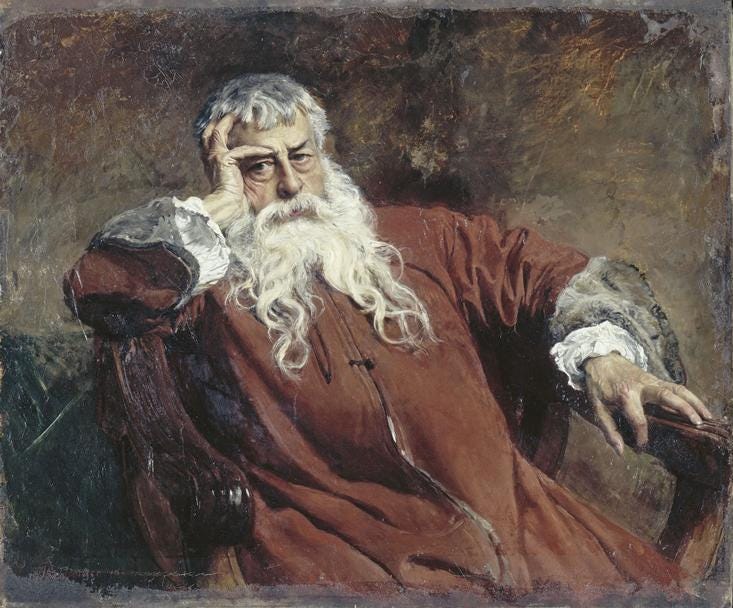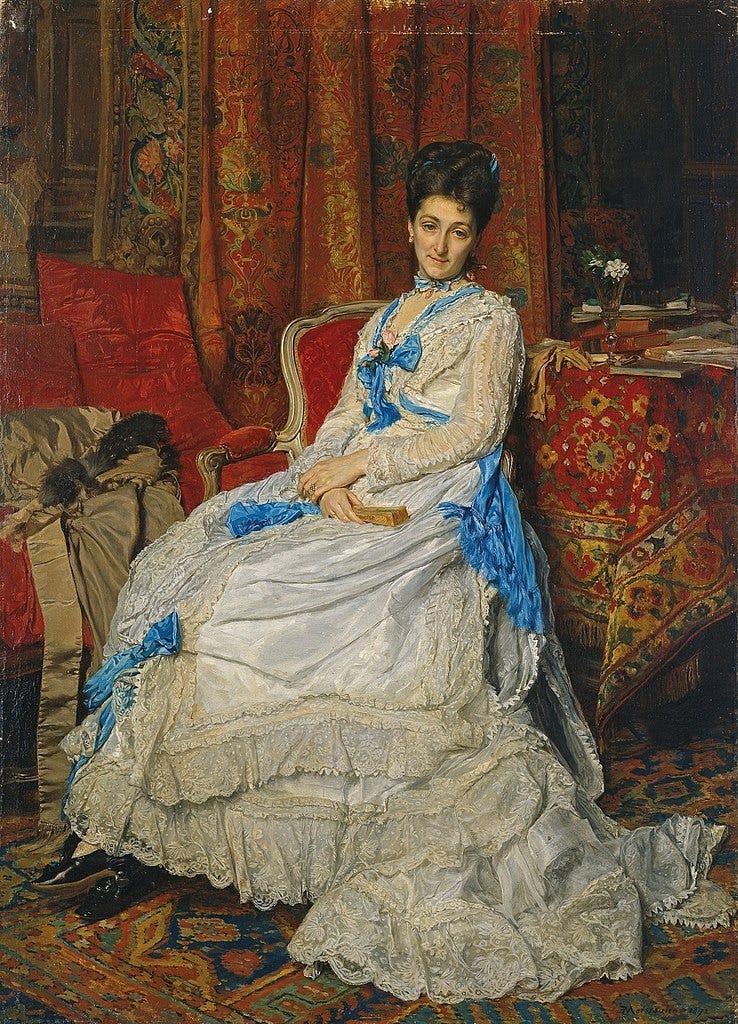Meissonier's Portrait Fail
The story of a commission that went horribly wrong
A scandal about a displeased portrait client damaged the career of the most famous painter of his day, Ernest Meissonier (French 1815-1891), and ended with the painting thrown onto a fire.
Ernest Meissonier, Self Portrait
Despite his celebrity and the vast sums paid for his work, Meissonier had painted few images of women, and few portrait likenesses. This commission came in the last decade of his life and at the pinnacle of his international success.
The sitter was Mrs. J. W. Mackay, of California. After seeing the portrait nearly finished, she asked for it to be finished to her satisfaction. A bill was sent, and at first her husband refused to pay for it. The price was vast for 1884, estimated between ten and twenty-five thousand dollars (in today’s dollars, roughly between $250k and $1mil).
Meissonier responded by vowing to keep the painting. He put it on public exhibition in France, where he said the public would be the judge.
In his view he had simply painted a picture that was too accurate. In her view he had made her look coarse, and made up like a painted doll.
Here’s a painting he did earlier of another female sitter:
Ernest Meissonier, Portrait Of Marquesa De Manzanedo, 1872
An account sympathetic to the sitter said:
"It seems that after Meissonier had painted the portrait, Mrs. Mackay criticized it a little and wanted it just a little more finished. It was not finished then when she went into the country, and she wrote him she would come up anytime he wanted to finish it."
"He never said a word, but finished the hands from a model of a big, coarse woman with ugly hands, and made the cheeks and lips powdered and painted frightfully, and left the neck yellow, just because he was so angry that she should dare to criticize such a great master as himself."
"Now Mrs. Mackay thought, with good reason I think, that she ought to have been the model to her own portrait, and that she could ask at least for a faint resemblance, especially as she would have to pay $15,000 for the picture."
"Without informing Mrs. Mackay as to his intentions or asking her consent, he simply sent the picture to the exhibition, where her friends saw it and told her of it. She wrote and asked for the picture, and at the close of the exhibition it was sent to her, with a bill."
"Mr. Mackay was so provoked that he wanted to make a fuss about it, but his friends persuaded him to pay it and say nothing more about it. This he did, and threw the picture in the fire. But on the same day Mr. Mackay left for America the papers came out with the story, abusing Mrs. Mackay, and the French artists are to meet and have an indignation meeting that a canvas immortalized by Meissonier should be burned by a vulgar American."
The debate about who was in the right was taken up in all the papers on both sides of the Atlantic. An early writer about the incident said that "Meissonier, by the haughtiness of his manner, his artistic independence, and, most of all, by his unpardonable success, had been sowing dragons teeth for half a century. And now armed enemies sprang up, and sided with the woman from California. They made it an international episode: less excuses have involved nations in war in days agone....The tide of Meissonier's prosperity began to ebb: prospective buyers kept away; those who had given commissions canceled them."
Across the paywall break is an account more sympathetic to Meissonier, plus links, sources, and notes.
Keep reading with a 7-day free trial
Subscribe to Paint Here to keep reading this post and get 7 days of free access to the full post archives.




